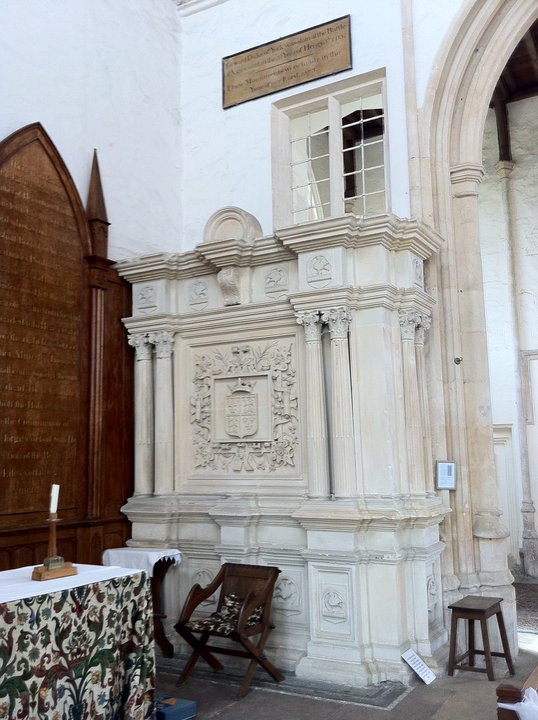How did Edward duke of York die at Agincourt?
By Dr Michael Jones
Agincourt was an extraordinary English triumph. And one reason why Henry V’s victory stunned contemporaries was the huge discrepancy in casualties between the two sides: thousands suffered by the French and – if a majority of the chroniclers are to be believed – little more than a hundred lost by the English. The most prominent of these was Edward duke of York, commander of the English army’s vanguard.
York was a personal friend of Henry, and dedicated a hunting treatise to him (the first book on hunting in the English language), The Master of Game. Documentary material shows that the majority of English losses occurred in the duke’s own retinue, where more than 90 men were killed, alongside York himself. It seems – from this evidence – that York died valiantly. But in the Tudor period a quite astonishing legend came into being – that gave him a very different kind of death: the duke was fat, and because he was seriously over-weight, either suffocated in his armour, as a result of a near-morbid obesity, or died of a heart attack.
This was somewhat less than heroic, and a number of modern historians have unquestioningly repeated this assertion – one that disparages York, marginalises his influence on the battle and portrays his death as tragi-comic – although there is no contemporary evidence for it whatsoever.
The first account of the duke being fat – and his obesity directly contributing to his death in battle, was only compiled by the Tudor antiquary John Leland in the early 1540s (in his Itineraries) – that is some 130 years after the battle . Leland reported correctly that York: ‘led the vanguard of the battle’ and then added, ‘where being much heated and thronged, being a fat man, he was smouldered to death.’
John Leland’s account provided a most striking vignette – one implying that York was overcome by heat exhaustion and asphyxiated in his own armour. And although it was a much later source, the military historian Charles Oman wove a similar narrative, drawing upon Leland’s account, claiming that the forty-two year old duke ‘was corpulent and died of exhaustion’. Desmond Seward, in his 1987 book Henry V as Warlord, went further: he consistently described York as over-weight, bluntly commenting that at Agincourt, ‘the fat duke of York was trampled under-foot and suffocated.’
This is all less than complimentary. And it is bizarre to imagine that Henry V, whose own physical fitness was praised by contemporary chroniclers, gave command of the vanguard – an honour position – to a man so over-weight he could scarcely fight. Henry, as Prince of Wales, had earlier served with York against the revolt of Owen Glendower in Wales and was impressed enough by the duke’s ability as a soldier – and his fitness for command, in every sense of the phrase – to give a testimonial of his martial prowess before the English Parliament.
Medieval chroniclers would on occasions give particular information on how a man fought and died – if it either added to his chivalric reputation or diminished it. In York’s case we do have another account of his death, and one written within a generation of Agincourt. Here, detail on the duke’s death is provided by the London chronicle Cleopatra CIV, which likely drew on returning soldiers’ accounts of the battle – and it offers strong contrast to Leland’s account. For the London chronicler chose to single out those who had displayed particular valour at Agincourt. Amidst this roll-call of honour, it was stated:
‘The Duke of York was also lost,
For his king, no foot would he flee
Til his bascinet to his brain was bent.’
In other words, York refused to move more than a foot from his standard, holding the line and trading blows with the enemy until his own helmet [bascinet] was smashed into his skull. It is a vivid and moving sequence of events, and in this version, it is a death derived from extraordinary courage rather than corpulence.
York had taken an active part in the 1415 campaign. The Brut chronicle described one instance of his involvement, how it was through the duke’s ‘wise advice that it came about that the English [archers] planted stakes sharpened at both ends in the soil in front of them, so that they should not be trampled underfoot by the French cavalry.’ The source then emphasised: ‘This device was of great help to our men that day.’
To understand York’s death, the larger context of the battle is all-important. After the failure of the French cavalry attacks, their dismounted men-at-arms had advanced on the English position, changing formation from line abreast to three columns, as Henry V’s chaplain powerfully related, in an attempt to punch through the thin line opposing them. The English banners, or standards, of their chief magnates were their target: York and his men would bear the brunt of one of the French attacks. And by holding firm, even at the cost of his own life, the duke prevented the line being breached.
The recent discovery of one of York’s household accounts (for the year 1409-10), shows a regime of abstinence rather than gluttony, and an active lifestyle, centred on his love of hunting. Its evidence makes Leland’s version of events most unlikely – and it is surely time to stop following it. For contemporaries, in the aftermath of the great battle York was laid to rest at Fotheringhay Church (Northamptonshire) as a hero – on the 600th anniversary of Agincourt it is only fitting for him to be regarded in a similar light.
York’s household account, which gives valuable information on his lifestyle, has recently been edited by James Toomey, and is found in the Worcestershire Historical Society, 24 (2013).The relationship between Henry V and the duke – and the crucial role York played in the battle – is more fully explored in my book 24 Hours at Agincourt (WH Allen), to be brought out in October 2015.
Memorial to the 2nd Duke of York in the Church of St Mary and All Saints, Fotheringhay, Northamptonshire, licensed under the Creative Commons Attribution-Share Alike 3.0 Unported license, author Andrewrabbott

